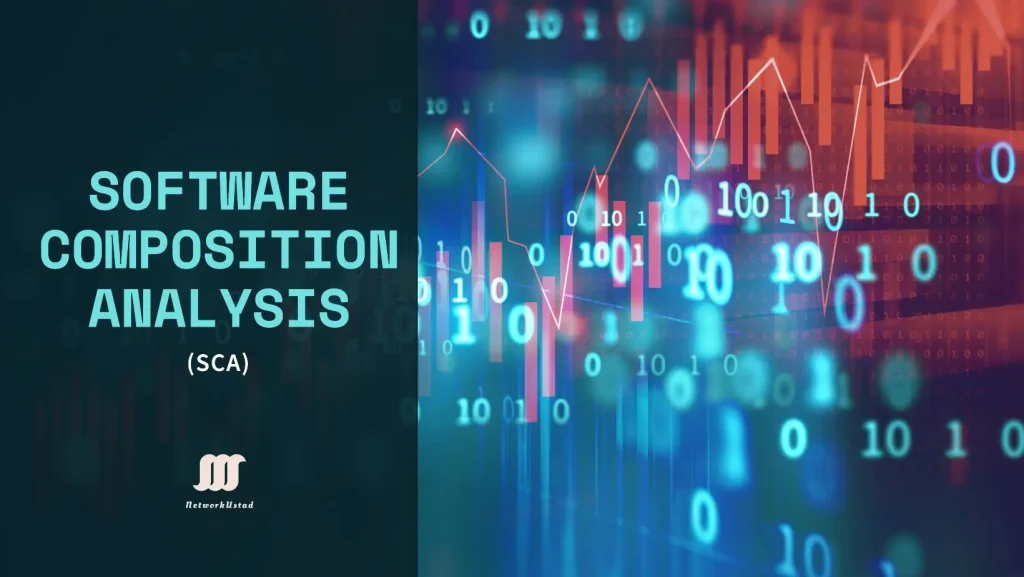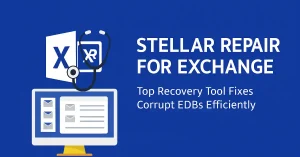Nowadays, the majority of applications use at least some open-source code. This is thanks to the code’s collaborative and public nature, making it incredibly convenient for developers. However, this convenience is a double-edged sword, as the code becomes incredibly convenient to exploit for malicious actors as well.
Namely, once a malicious actor finds a vulnerability in an open-source project, they can attack any application that uses code from the project. To combat this, many organizations have started looking into ensuring open-source security – i.e. ensuring that the code is secure when using third-party integrations from open-source projects. One of the best ways to ensure open-source security is with the use of Software Composition Analysis, also known as SCA.
So, what is SCA and how is it different than other open-source security solutions? Read to learn more about it.
What Is Software Composition Analysis (SCA)?
Simply put, Software Composition Analysis is a process by which organizations can identify and evaluate the open-source components being used in their applications. It involves thoroughly scanning the code and comparing it against known vulnerabilities, allowing organizations to quickly identify any potential code issues. This allows developers to make sure that their applications are secure before they deploy them.
In addition to being used for code-scanning, SCA can also be used to identify potential license issues. Oftentimes, organizations will use open-source code without realizing that it is bound to certain licensing terms and conditions. SCA makes this process easier by scanning the project’s open-source license too, allowing organizations to easily make sure their applications are fully compliant.

How Is SCA Different From Other Security Solutions?
There are many open-source security solutions on the market in addition to SCAs, but none offer such a comprehensive solution when it comes to open-source code. This is because SCA’s approach offers more features than a traditional open-source code scanner, with the following features included:
Faster Scanning
As an open-source security solution, Software Composition Analysis (SCA) is incredibly fast and efficient compared to other security tools. This is because it can quickly scan the code for any vulnerabilities, potential license issues, or discrepancies in a matter of minutes. Having these features makes it an incredibly useful tool for organizations that need to quickly identify any potential problems with their application’s code, which is especially beneficial in the case of large applications.
Detection of Vulnerability
SCA is capable of detecting any known vulnerabilities in the code, allowing organizations to take action before they deploy their application. Having to fix a vulnerability or a bug in production is a lot harder than fixing it in development, which is why the use of Software Composition Analysis (SCA) is popularized. All in all, this helps ensure that applications are secure and free from any malicious actors before they’re in the hands of the user – i.e., in the early stages of the SDLC.
License Compliance
It’s worth mentioning that Software Composition Analysis (SCA) can also be used to quickly identify any potential licensing issues with the code. Although this isn’t necessarily used for security purposes, it’s still important for organizations to make sure they comply with open-source licenses. This makes sure organizations don’t violate any of the licensing terms and conditions associated with their open-source code, allowing them to remain fully compliant.
Automatic Updates
One large benefit of SCA is that it can automatically update the code to patch any security vulnerabilities. Using Software Composition Analysis (SCA) will ensure that the code is always up-to-date and secure, as any known vulnerabilities are quickly patched as soon as they’re discovered. This helps organizations remain one step ahead when it comes to open-source security, as they don’t have to manually update the code every time a new vulnerability is discovered.
Reliability
Software Composition Analysis (SCA) is incredibly reliable, as it only uses trusted and secure sources for its scans. This ensures that organizations can trust the results of their scans and take appropriate action if any vulnerabilities or license issues are discovered.
Top Software Composition Analysis (SCA) Tools for 2025
To help organizations implement Software Composition Analysis (SCA) effectively, choosing the right tool is critical. Below, we explore the top SCA tools for 2025, highlighting their features, strengths, and use cases. These tools help developers identify vulnerabilities, ensure license compliance, and secure the software supply chain.
Comparison of Top SCA Tools
| Tool | Key Features | Best For | Pricing |
|---|---|---|---|
| Snyk | AI-powered vulnerability scanning, real-time alerts, seamless IDE integration | DevSecOps teams, open-source projects | Free tier; paid plans start at $25/user/month |
| Synopsys Black Duck | Comprehensive component tracking, deep license compliance, risk prioritization | Large enterprises, complex applications | Custom pricing (enterprise-focused) |
| Mend (WhiteSource) | Automated remediation, policy enforcement, cloud-native support | Agile teams, cloud-based applications | Starts at $1,000/year (approx.) |
| Qwiet AI | AI-driven vulnerability detection, code scanning, low false positives | Startups, AI-focused security teams | Contact for pricing |
| Sonatype Nexus | Repository management, dependency analysis, integration with CI/CD pipelines | Teams using Nexus repositories | Starts at $4,000/year (approx.) |
Why These Tools Stand Out
- Snyk: Known for its developer-friendly interface, Snyk integrates with GitHub and other platforms, offering real-time vulnerability fixes. In 2025, its AI-driven scans detect 30% more vulnerabilities than traditional tools.
- Synopsys Black Duck: Ideal for enterprises, Black Duck excels in identifying obscure components and ensuring compliance with complex licensing requirements.
- Mend: Offers automated fixes and policy enforcement, reducing manual effort for DevOps teams.
- Qwiet AI: Leverages AI to minimize false positives, making it a top choice for teams prioritizing efficiency.
- Sonatype Nexus: Combines SCA with repository management, streamlining workflows for teams already using Nexus.
Pro Tip: Evaluate tools based on your team’s size, budget, and integration needs. For example, startups may prefer Snyk’s free tier, while enterprises benefit from Black Duck’s robust compliance features.
Case Study: Real-World Impact of SCA
How GitLab Secured Its Software Supply Chain with SCA
In 2024, GitLab, a leading DevOps platform, faced increasing security threats due to its reliance on open-source components. By implementing Snyk’s SCA tool, GitLab achieved the following:
- Identified Critical Vulnerabilities: Snyk scanned GitLab’s codebase and flagged a critical Log4j vulnerability within hours, preventing potential exploits.
- Automated Remediation: The tool suggested patches and alternative libraries, reducing remediation time by 40%.
- Improved Compliance: GitLab ensured compliance with open-source licenses, avoiding legal risks during an audit.
- Enhanced Developer Productivity: Integration with GitLab’s CI/CD pipeline allowed developers to address issues without leaving their workflow.
This case study highlights how SCA tools can transform security practices, saving time and reducing risks. By adopting SCA, GitLab strengthened its reputation as a secure platform, gaining trust from enterprise clients.
SCA in 2025: Key Trends and Statistics
Insert as a subsection in “Why is SCA Important?” or after the introduction
The importance of Software Composition Analysis (SCA) continues to grow in 2025 as software supply chain attacks rise. Here are key trends and statistics shaping SCA adoption:
- Rising Threats: According to Synopsys’s 2024 Open Source Security Report, 80% of applications contain at least one vulnerable open-source component, emphasizing the need for SCA.
- AI Integration: Tools like Qwiet AI and Snyk now leverage AI to predict vulnerabilities, reducing false positives by up to 25% compared to 2023.
- Regulatory Push: New regulations, such as the EU’s Cyber Resilience Act (2024), mandate stricter software supply chain security, making SCA essential for compliance.
- Shift Left Adoption: 65% of DevOps teams now integrate SCA into early development stages, improving security without slowing delivery (Gartner, 2025).
- Open-Source Dominance: Over 90% of modern applications rely on open-source components, amplifying the need for robust SCA tools (Sonatype, 2024).
These trends underscore SCA’s role in securing software in an increasingly complex threat landscape. By staying ahead of these developments, organizations can protect their applications and maintain compliance.
Conclusion
Software Composition Analysis can be a quite beneficial tool for organizations that use open-source code. It allows them to quickly scan for any potential vulnerabilities and licensing issues, ensuring their applications are fully secure and compliant with the terms of their licenses. Moreover, SCA can also be used to automatically update the code with any new security patches, allowing organizations to stay one step ahead of any malicious actors.
FAQs
What is the difference between SCA and SAST?
Software Composition Analysis (SCA) focuses on identifying vulnerabilities in open-source and third-party components, while Static Application Security Testing (SAST) analyzes custom code for security flaws. Both are complementary for a robust security strategy.
How often should SCA scans be performed?
Run SCA scans at every stage of the software development lifecycle (SDLC), including during development, pre-commit, and post-deployment, to catch vulnerabilities early.
Can SCA tools detect zero-day vulnerabilities?
While SCA tools primarily rely on known vulnerability databases (e.g., CVE, NVD), advanced tools like Qwiet AI use machine learning to predict potential zero-day risks based on code patterns.
Which industries benefit most from SCA?
Industries like finance, healthcare, and tech, where data security and compliance (e.g., GDPR, HIPAA) are critical, benefit significantly from SCA.
How do I choose the right SCA tool?
Consider factors like integration with your tech stack, budget, and team size. For example, Snyk suits small teams, while Black Duck is ideal for enterprises.





